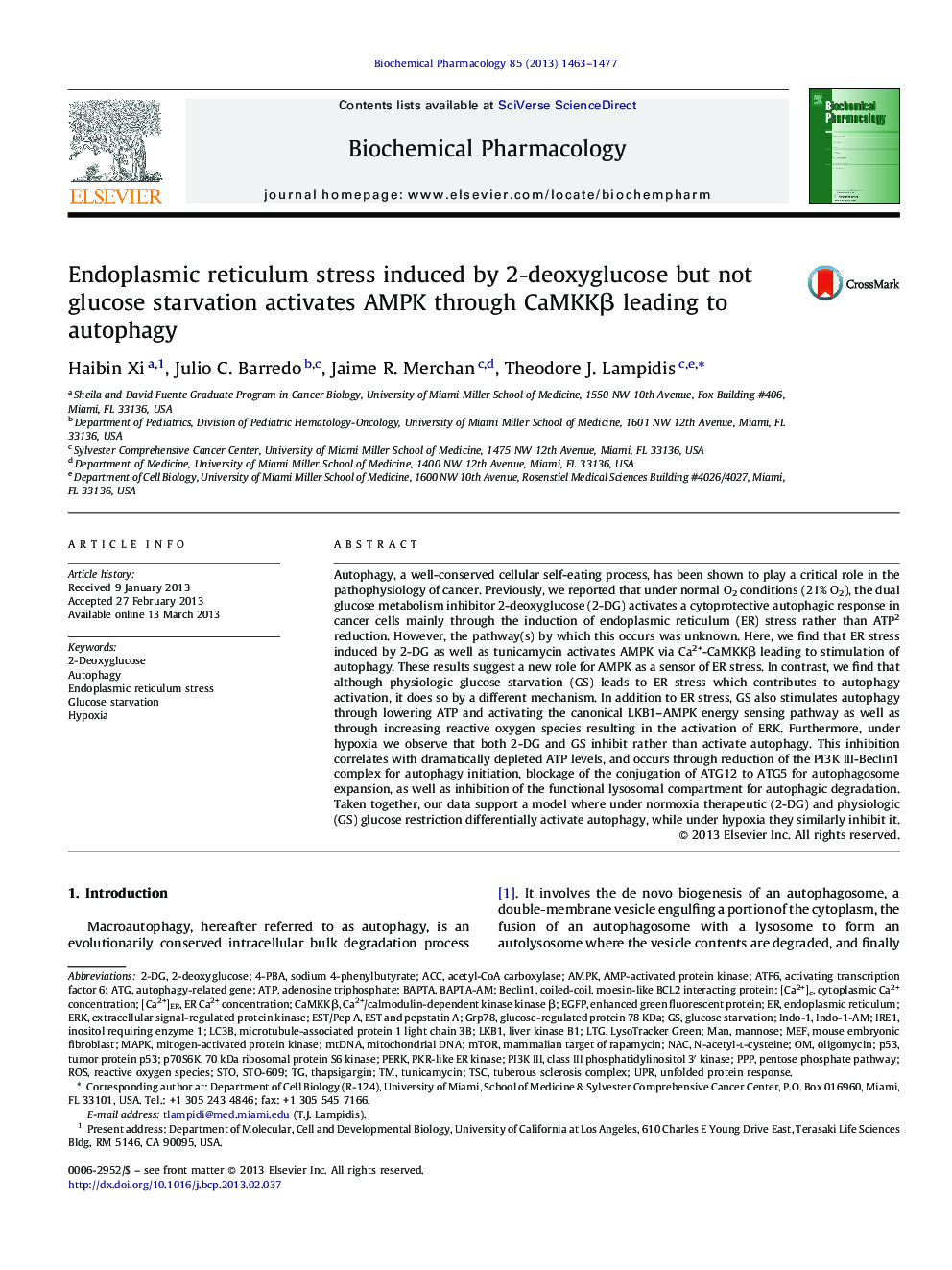| Article ID | Journal | Published Year | Pages | File Type |
|---|---|---|---|---|
| 2512734 | Biochemical Pharmacology | 2013 | 15 Pages |
Autophagy, a well-conserved cellular self-eating process, has been shown to play a critical role in the pathophysiology of cancer. Previously, we reported that under normal O2 conditions (21% O2), the dual glucose metabolism inhibitor 2-deoxyglucose (2-DG) activates a cytoprotective autophagic response in cancer cells mainly through the induction of endoplasmic reticulum (ER) stress rather than ATP2 reduction. However, the pathway(s) by which this occurs was unknown. Here, we find that ER stress induced by 2-DG as well as tunicamycin activates AMPK via Ca2+-CaMKKβ leading to stimulation of autophagy. These results suggest a new role for AMPK as a sensor of ER stress. In contrast, we find that although physiologic glucose starvation (GS) leads to ER stress which contributes to autophagy activation, it does so by a different mechanism. In addition to ER stress, GS also stimulates autophagy through lowering ATP and activating the canonical LKB1–AMPK energy sensing pathway as well as through increasing reactive oxygen species resulting in the activation of ERK. Furthermore, under hypoxia we observe that both 2-DG and GS inhibit rather than activate autophagy. This inhibition correlates with dramatically depleted ATP levels, and occurs through reduction of the PI3K III-Beclin1 complex for autophagy initiation, blockage of the conjugation of ATG12 to ATG5 for autophagosome expansion, as well as inhibition of the functional lysosomal compartment for autophagic degradation. Taken together, our data support a model where under normoxia therapeutic (2-DG) and physiologic (GS) glucose restriction differentially activate autophagy, while under hypoxia they similarly inhibit it.
Graphical abstractFigure optionsDownload full-size imageDownload as PowerPoint slide
